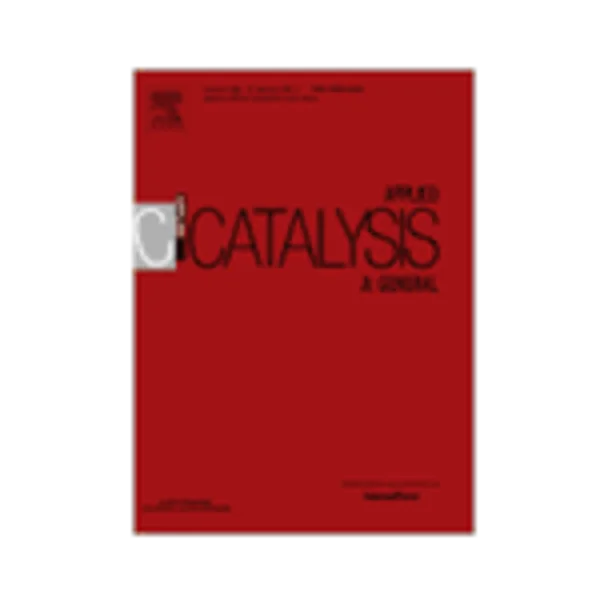-
washcoated pd/al2o3 monoliths for the liquid phase hydrodechlorination of dioxins
جزئیات بیشتر مقاله- تاریخ ارائه: 1392/07/24
- تاریخ انتشار در تی پی بین: 1392/07/24
- تعداد بازدید: 871
- تعداد پرسش و پاسخ ها: 0
- شماره تماس دبیرخانه رویداد: -
the catalytic activity and durability of 2 wt.% pd/al2o3 in powder and washcoated on cordierite monoliths were examined for the liquid phase hydrodechlorination (lphdc) of polychlorinated dibenzo-p-dioxins/polychlorinated dibenzofurans (pcdd/fs), also known as dioxins. naoh was employed as a neutralizing agent, and 2-propanol was used as a hydrogen donor and a solvent. fresh and spent powder and monolith samples were characterized by elemental analysis, surface area, hydrogen chemisorption, scanning electron microscopy/energy dispersive x-ray spectroscopy (sem/edx), and transmission electron microscopy/energy dispersive x-ray spectroscopy (tem/edx). three reactor configurations were compared including the slurry and monolith batch reactors as well as the bubble loop column resulting in 100, 70, and 72% sample toxicity reduction, respectively, after 5 h of reaction. however, the slurry and monolith batch reactors lead to catalyst sample loss via a filtration process (slurry) and washcoat erosion (monolith batch), as well as rapid deactivation of the powder catalyst samples. the monolith employed in the bubble loop column remained stable and active after four reaction runs. three preemptive regeneration methods were evaluated on spent monolith catalyst including 2-propanol washing, oxidation/reduction, and reduction. all three procedures reactivated the spent catalyst samples, but the combustion methods proved to be more efficient at eliminating the more stable poisons.
مقالات جدیدترین رویدادها
-
استفاده از تحلیل اهمیت-عملکرد در ارائه الگوی مدیریت خلاقیت سازمانی و ارائه راهکار جهت بهبود
-
بررسی تاثیر ارزش وجوه نقد مازاد بر ساختار سرمایه شرکت های پذیرفته شده در بورس اوراق بهادار تهران
-
بررسی تأثیر سطح افشای ریسک بر قرارداد بدهی شرکت های پذیرفته شده در بورس اوراق بهادار تهران
-
بررسی تأثیر رتبه بندی اعتباری مبتنی بر مدل امتیاز بازار نوظهور بر نقد شوندگی سهام با تأکید بر خصوصی سازی شرکت ها
-
تأثیر آمیخته بازاریابی پوشاک ایرانی بر تصویر ذهنی مشتری پوشاک ایرانی (هاکوپیان)
-
بادگیر (بادخان و بادخور) عناصر کاربردی در سرمایش و تهویه ساختمان های مدرن با استفاده از انرژی های تجدیدپذیر
-
بررسی اثر بخشی آموزش هوش هیجانی بر کاهش پرخاشگری و افزایش سازگاری فردی، اجتماعی دانش آموزان پسر پایه ششم
-
مهندسی مجدد فرآیند حسابداری اطلاعات بر مبنای erp
-
a miniature generator using piezoelectric bender with elastic base
-
pseudo-static seismic analysis of retaining walls with circular failure wedge in frictional-cohesive backfill through horizontal slices method
مقالات جدیدترین ژورنال ها
-
مدیریت و بررسی افسردگی دانش آموزان دختر مقطع متوسطه دوم در دروان کرونا در شهرستان دزفول
-
مدیریت و بررسی خرد سیاسی در اندیشه ی فردوسی در ادب ایران
-
واکاوی و مدیریت توصیفی قلمدان(جاکلیدی)ضریح در موزه آستان قدس رضوی
-
بررسی تاثیر خلاقیت، دانش و انگیزه کارکنان بر پیشنهادات نوآورانه کارکنان ( مورد مطالعه: هتل های 3 و 4 ستاره استان کرمان)
-
بررسی تاثیر کیفیت سیستم های اطلاعاتی بر تصمیم گیری موفق در شرکتهای تولیدی استان اصفهان (مورد مطالعه: مدیران شرکتهای تولیدی استان اصفهان)
-
بررسی اطلاعات متقارن در پیش بینی های تحلیل گران سهام از عملکرد شرکتی و رفتار سرمایه گذاران
-
رابطه بین حق الزحمه حسابرسی و تجربه حسابرس با کیفیت حسابرسی
-
ﺗﺒﯿﯿﻦ مدلهای ﺟﺎﯾﮕﺰﯾﻦ قیمت گذاری دارایی در پیش بینی بازده مورد انتظارسهام
-
ارزیابی نحوه اجرای اصل عدم تبعیض در خصوص حقوق پناهندگان
-
investigate the effect of services compensation system on employee performance in forensic of kohgiluyeh and boyerahmad province




سوال خود را در مورد این مقاله مطرح نمایید :